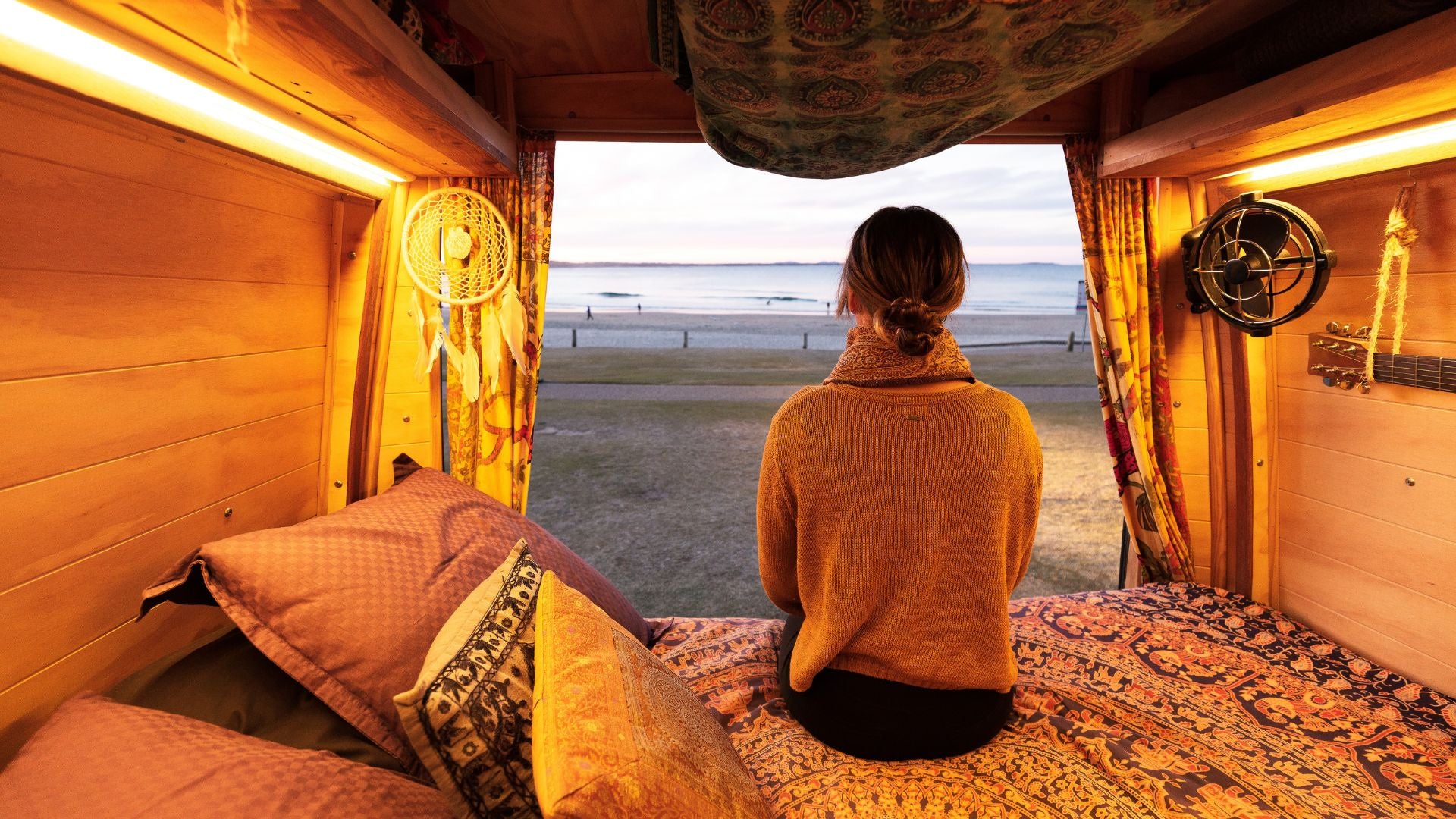Before shifting your living arrangements into your van full-time, you must consider the electrical system you intend to install. Most conversion vans will have similar arrangements at their core, as you’ll have batteries that you’ll have to charge and discharge. But attaining the precise numbers to power your camper van effectively is crucial. The fundamental components of learning how to size your camper van’s electrical system include figuring out what batteries you need, the AC and DC appliances, and the varying ways you plan to charge them. But first, let’s begin with sizing for your batteries.
Sizing the Batteries
Batteries are integral for storing electricity and are the most vital component of your van’s electrical system. The first thing you must do at home is assess your daily power usage. You don’t want to settle on a battery based on a blind guess, only to learn the hard way that you made the wrong decision.
There’s no need to purchase a battery capable of massive power when you only use a fraction of its capabilities. Still, it’s advisable to have a battery that can handle twice as much as your projected daily consumption on board. The only way to pinpoint the amount of power you require is by doing the appropriate power audits.
DC Audit
The good news is that you don’t need an electrical engineering degree to calculate the power consumption in your vehicle. First, you must crunch the numbers for your DC power, which isn’t that tedious. Calculate the amperage—the instantaneous flow of energy—for every point of usage and multiply it by the number of hours you plan on using it in a given day. This number will tell you how many amp hours of battery life you’ll want.
AC Audit
The other variable you must account for is the AC power. There is a small fraction of power that you’ll lose as the DC power converts into AC power, leading you to crunch some other numbers. You will take the answers from your DC audit and divide that figure by 0.85, considering that 15% is the approximate value you lose going from DC to AC. Some appliances list their power usage in watts, forcing you to follow another step in your mathematical equation by dividing the wattage by 12V.
AGM v. Lithium Batteries
Now that you’ve finished your flashback to your high school mathematics class, you can choose the battery you want for your camper van. The two batteries you’ll likely stumble upon are AGM and lithium. Let’s see how they are fair regarding the two most important factors behind your purchasing decision: battery life and price.
If you’re looking to save a buck, AGM batteries are the right choice. However, AGM batteries are heavier and can only discharge half the capacity before negative consequences exist. Conversely, lithium batteries are lighter, and you can drain them to nearly 100% of capacity without an issue. But lithium batteries are more efficient, so you must pay for the difference.
The good news is that you may purchase more units of the same battery, connect them in series, and double the power. You don’t have to purchase a single enormous 400Ah battery; moulany conversion vans have numerous 100Ah batteries.
Charging Methods
Your new batteries don’t do you much good if you cannot charge them effectively. Thus, the next step is selecting the components you need to give your batteries juice. The three methods for charging your batteries are shore power, solar power, and driving.
Regardless of your primary choice, we strongly recommend that you don’t put your faith in only one way of charging. You should always assume the worst thing can happen since it allows you to cover your bases when things go awry. Accommodating your van for all three methods ensures you always have an out if one of the three isn’t cooperating.
Shore Power
In this digital world, many of us have the instinct to plug in our devices to let them charge. After all, we do that with our phones every night—so why not use the same philosophy for your van’s electrical system? Your system will need a shore power outlet and an inverter charger. Victron energy products are a safe and reliable bet for this method.
Solar Power
Solar power is wonderful because there’s little maintenance involved once you set it up. Plus, you will always have access to power, assuming scientists assert correctly that the sun will still be kicking for another 5 billion years.
The best way to use solar power to your benefit is using a maximum power point tracking solar charge controller (MPPT). This handy controller can convert the voltage of solar energy and transfer it to your batteries safely. MPPT controllers rise above other options because they deliver the most power to the batteries by increasing the amperage and decreasing the current’s voltage simultaneously.
A number after each charge controller signifies their maximum voltage and what they can withstand. A Victron controller reading 100/30 implies that they have a max voltage of 100V or 30A. Knowing how much solar power you have gives you an idea of what’s safe to use.
DC Charger
It’s always nice to do two things in one fell swoop, so charging your van as you are driving is a win-win. You’ll want to obtain a DC/DC charger to supply power to your batteries as you’re behind the wheel. You can find the DC/DC charger between the house and the chassis batteries. A DC/DC charger is much safer for controlling the current and the voltage traveling to your house batteries. This upgrade works like a gem when winter is approaching.
Depleting Batteries
Hopefully, all your appliances and devices have a way to get the power they need, but another critical component of managing your electrical system is depleting the batteries.
DC Fuse Panel
The DC fuse panel acts as the main hub for every DC appliance. Components like lights, fridge, fans, USB ports, and heater all need DC power. Not all your DC appliances require plug-ins to outlets, whereas AC appliances do.
AC Fuse Panel
Your vehicle should have a separate circuit breaker for each outlet, and an AC distribution panel can make this happen. Your inverter will send power to your AC distribution panel, passing through many circuit breakers before eventually leaving the panel and reaching your AC outlets. Common domestic outlets are on 15amp circuit breakers and are adequate for most AC requirements. More needy things like water heaters and cooktops might need 20amps.
Learning to size your camper van’s electrical system demands more effort than getting a tape measure to see what fits. You must account for several considerations to find the best option. Unaka Gear Company will happily help steer you toward finding the best electrical system for your camper van.




Share:
4 Benefits of Adding Solar Panels to Your Camper Van
Top 5 Reasons To Make the Jump to Living in a Van